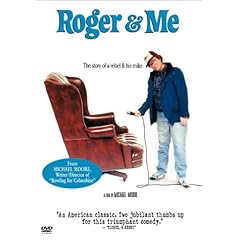Despite pronouncements of an end to The Age of Irony by a number of public intellectuals, essayists and even Time Magazine columnists, it seems that irony will be around long enough to enjoy the last days of the Mayan calendar with the cockroaches and Collected Longer Poems of W.H. Auden.
We’re reminded of this while pondering American cultural patterns in the Ipod Age. The culture, for lack of a better term, is at a state of hyperatomization. There’s an old anecdote about a certain way to offend a Spaniard: tell him Spain has 600 political parties. The inevitable rejoinder being, “You fool, Spain has 6 million parties and I am one of them!” Finally America can identify, replete with scores of youtube posters who are indeed their own biggest fans. In a vacuum, this isn’t ironic, even for the millions misusing the word on a daily basis.Â
What has happened in popular music seems to be steering towards irony.    Â
Let’s say you consider yourself the uber-music fan. You go into your local record shop to pick up a few choice vinyls from the Riverside catalogue and… “What’s this?”
“Why,” the clerk tells you in-between sharp breaths to properly polish his new belt buckle, “it’s ‘Good For What Ails You: Music of the Medicine Shows 1926-1937.’Â It happens to be Jack White’s favorite album this week.”
There are two options for the music consumer. Either you politely nod and sit the disc back down and look around for a Gid Tanner album or you buy it and put out of your mind that some hipster somewhere has beaten you to everything.
The further one wades into the waters of rare and obscure musical forms, though, the more he is made aware that with each passing year backwards he is witnessing via his headphones a music based communally, one without international or even national stars. At the end of his quest for American music’s holy grail he is humbled by the realization that everyone in Buncombe County, North Carolina beat him to it. What’s more, it was at the same time and there were no locked doors to be found, metaphorical or otherwise.
Perhaps our postmodern personality crises aren’t so far removed from the days of the medicine show. As Free Show Tonite points out in the beginning, the entertainment at these extravaganzas was a ruse to coax the more slow witted of rural Americans to buy snake oil. (Think Cialis. Or, for the forty-plus million uninsured Americans out there, think Snake Oil.) Continuing the crawl, the viewer enjoys her first caveat. Some of the scenes illustrate “…folk culture of the period (that) played upon deep-seated racial fears and stereotypes.” We’ve come so far.
Free Show Tonite documents the last old time medicine show. Surviving performers from the medicine and minstrelsy heyday were reunited for a two day event in North Carolina, circa 1982. Many devotees of old time music will notice some things they’ve only read about. For example, there’s a great scene featuring the lost art of “beating straws” on a fiddle. They’ll also be treated to OTM luminaries. There’s
Hammie Nixon, whose jug mastery extends even to what appears to be a Sundrop soda can. Guitar Slim and Walking Mary McClain offer some rousing numbers which belie their advanced years at the time of filming. And there’s that Roy Acuff fellow, who also narrates the film.
Read the rest of this entry »
 It’s tough not to like record collector Joe Bussard, subject of the film Desperate Man Blues. Tough, provided you’re not a devotee of rock n’ roll music. Tough, unless you happen to be one of those people laboring under the misapprehension that jazz music has been made post-1933. Tough if you’re not one of the deluded fools whom thinks he has some classic sides available on 78 rpm. Even if you fall under one of these three categories, which comprises about 78% of the population of the United States circa 2006, not liking Bussard seems a difficult proposition.
It’s tough not to like record collector Joe Bussard, subject of the film Desperate Man Blues. Tough, provided you’re not a devotee of rock n’ roll music. Tough, unless you happen to be one of those people laboring under the misapprehension that jazz music has been made post-1933. Tough if you’re not one of the deluded fools whom thinks he has some classic sides available on 78 rpm. Even if you fall under one of these three categories, which comprises about 78% of the population of the United States circa 2006, not liking Bussard seems a difficult proposition.
 Minutes into Michael Moore’s first feature length film the viewer is introduced to the two themes which will reoccur for more than a decade. The first is the plight of the American working class and the maniacal nature of predatory capitalism. The second, as Moore’s first employer outside his hometown of Flint, Michigan tells him, is that Michael Moore and California are a “mismatch.â€
Minutes into Michael Moore’s first feature length film the viewer is introduced to the two themes which will reoccur for more than a decade. The first is the plight of the American working class and the maniacal nature of predatory capitalism. The second, as Moore’s first employer outside his hometown of Flint, Michigan tells him, is that Michael Moore and California are a “mismatch.â€


